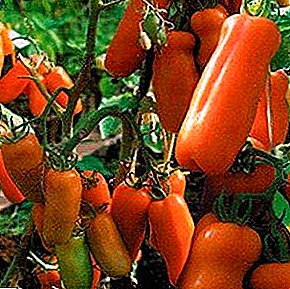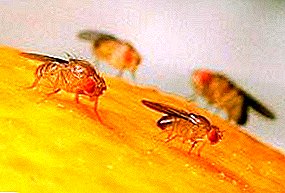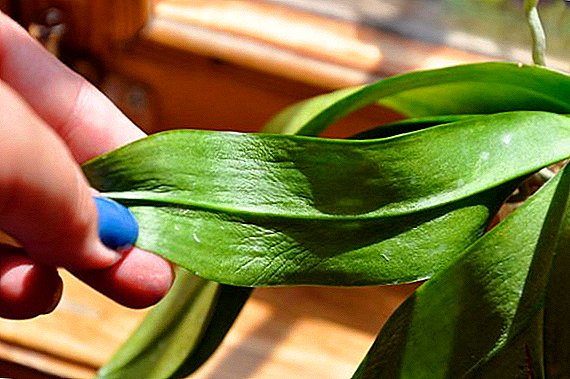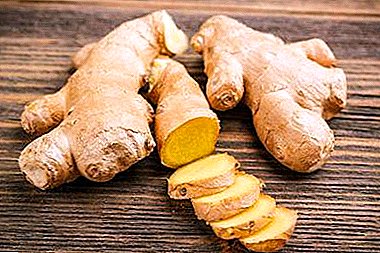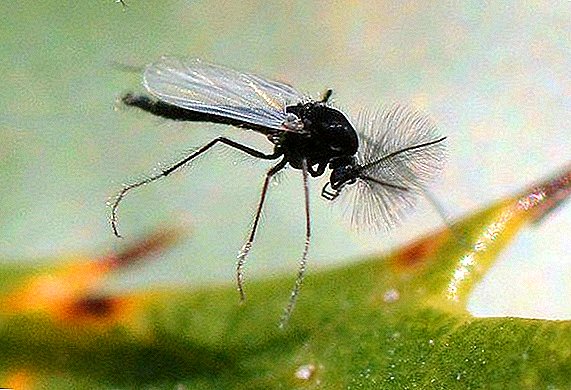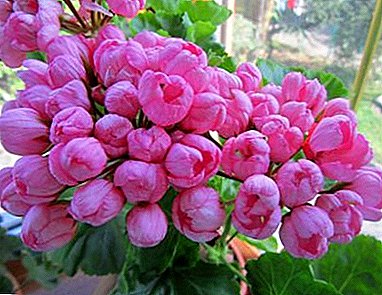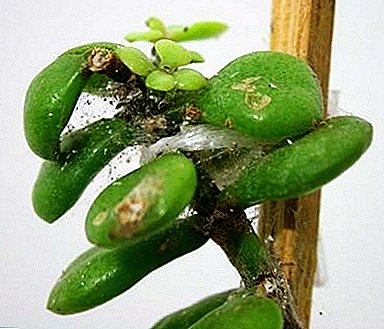
Seeds of Dutch breeders are widely known to farmers around the world. They have such qualities as: excellent germination, high yields, good external and taste qualities of root crops, plant resistance to diseases. One of the worthy representatives of the breeding company Bejo is Baltimore carrot F1.
The article details the characteristics of Baltimore F1 carrots, as well as the rules for harvesting and storage.
Characteristic
Description with photo
The carrots of this variety have a beautiful appearance and taste. Bright orange roots have a smooth conical shape. The surface of the carrot is smooth, the tip is rounded, the skin is thin. The length of the fruit is 20-25 cm, thickness is 3-5 cm. The weight of the fruit is 200-220g. The flesh is juicy, the core is thin. Leaves powerful dissected form. The plant in this variety reaches a height of 40 cm.
Check out further photos of the Baltimore F1 variety.



What sort is it?
Hybrid belongs to the "Berlikum-Nantes" variety with characteristic for him stupid root vegetables. In length and width, they exceed the "Nantes" variety.
Amount of fructose and beta carotene
The variety is famous for its valuable nutritional, dietary and healing properties. 100 g of carrots contain:
- fructose 7.0 - 7.5%;
- dry matter 11.5 - 12.5%;
- beta carotene about 22.5 mg.
Sowing time
Sow from April to May. Can be planted at a later date. Carrots will have time to gain weight and form a characteristic shape of the root.
For early harvest, sowing is done in late autumn.
Germination
Seeds have good germination, have high yields and good taste and commercial qualities.
The average weight of a root
The root mass is from 0.15 to 0.25 kg, with an average of 0.2 kg.
Productivity from 1 ha
Productivity at this grade is at the high level. The yield per hectare is 336 - 604 centners.
Appointment and keeping quality
 The hybrid has a high yield and, therefore, is used both in personal subsidiary farms and in industrial cultivation. Carrots of this variety are used for making juices, mashed potatoes, baby food. It is widely used in cooking, well-proven in freezing and canning.
The hybrid has a high yield and, therefore, is used both in personal subsidiary farms and in industrial cultivation. Carrots of this variety are used for making juices, mashed potatoes, baby food. It is widely used in cooking, well-proven in freezing and canning.
The crop maintains long transportation and possesses excellent keeping quality. At observance of the set temperature and humidity it can be stored until a new harvest. The grade is intended for long-term storage.
Cultivation regions
Carrot variety Baltimore F1 is grown in such areas:
- Central.
- Central Black Earth region.
- Northwestern.
- West Siberian.
- East Siberian.
- Far Eastern.
- Volgo-Vyatka.
- Lower Volga and Ural.
Higher yields have been achieved in the central region of Russia. Also, this variety is popular in Belarus, Moldova and Ukraine.
Choosing a place
Baltimore F1 is grown in any garden area, subject to the availability of loose soil and no darkening. But carrots can be grown not only in the open field, but also in greenhouses. Positive aspects of such cultivation will be earlier maturation than in open ground. The greenhouse should be in a sunny place and well ventilated.
Resistance to diseases and pests
Carrots of this variety have good resistance to diseases and pests. The foliage has a high resistance to fungal diseases and powdery mildew, and the root crop is poorly given to the nematode, which can significantly reduce the yield.
Carrots are most often affected by dry, white and gray rot. To avoid these diseases, potash and nitrogen fertilizers are applied to the soil, the leaves are treated with Bordeaux mixture. Pests include carrot fly. Its larvae develop in the soil and infect roots. Such drugs as Actellic, Decis Profi and Arrivo are well struggling with it.
Ripening
Belongs to varieties of medium ripening. From the moment the sprouts appear before harvest, it takes about 100 days. The variety is suitable for the production of early beam products, for which 90 days is enough.
The soil
Refers to unpretentious and undemanding. Light, well-drained and fertile soils, such as loams, are suitable for growing it. If the soil is rough and not loose, it is facilitated by the addition of sand, peat, sawdust.
Frost resistance
It has excellent frost resistance, tolerates cold. Subject to the required temperature and humidity can be stored until the new harvest. Suitable for many areas of Russia.
Baltimore F1, unlike other varieties, is excellent for winter crops.
- Seeds are sown in mid-November, the furrows are covered with dry soil.
- Top beds are covered with peat or humus.
- When the snow falls over the bed form a snowball to prevent overcooling of seeds.
Breeding history
 The Baltimore F1 carrot variety was developed by the Dutch breeding company Bejo. This hybrid is part of the numerous varietal group Berlikum / Nantes. The selection was carried out on the basis of the famous Nandrin F1 variety among farmers.
The Baltimore F1 carrot variety was developed by the Dutch breeding company Bejo. This hybrid is part of the numerous varietal group Berlikum / Nantes. The selection was carried out on the basis of the famous Nandrin F1 variety among farmers.
Biologists have changed the parental variety, crossing it with other varieties, improving its quality and increasing the resistance of the tops to diseases. The resulting hybrid has excellent taste. It is widely used in cooking and in the preparation of juices for children and diet.
Variety Baltimore F1 - a hybrid of the first generation. The seeds obtained from it (the second generation) will give a lower yield of carrots. Therefore, seeds must be purchased from the manufacturer.
What is the difference from other species?
- Fast ripening.
- Root crops are longer and thicker.
- More resistant to many diseases and pests.
- Suitable for cleaning the tractor.
- Grown as a culture for long-term storage.
- Very productive variety.
- Thin core.
Advantages and disadvantages
- Increased sweetness and juiciness of fruits, their thin skin.
- They have a cylindrical shape and bright orange color.
- High content of carotene compounds.
- Shortened ripening.
- High adaptation functions.
- Resistance to long-term transportation and storage
Growing up
Carrot varieties Baltimore F1 planted in early spring or before winter. For planting seeds choose loose and drained soil. Lightweight soil by adding sand, peat or sawdust. Landing should be sunny. For sowing seeds, beds of 20-25 cm in height are made, such that the thickness of the ground layer exceeds the length of the root crop.
Seeds of this variety are planted in rows 20 cm apart from each other. The depth of the groove is 2-3 cm, the distance between the seeds is 4 cm. The soil needs regular loosening.
Thin out 2 times:
- 2 weeks after emergence;
- then another 10 days.
Variety Baltimore F1 does not require additional feeding during the growing season.
Collection and storage

- Before collecting the ripened root crops the site is watered. Moisturizing the soil facilitates the extraction of carrots to the surface. The Baltimore F1 varietal feature is durable, high tops, and harvesting is done in a mechanized way.
- Crop carrots dried for several days, then sorted. Damaged vegetables are harvested to avoid subsequent infection of other root vegetables. The tops are completely removed.
- The next step - the carrots are transferred to a room where the temperature is maintained from -2 to +2 degrees and the air humidity is 90-95%.
Diseases and pests
- Dry rot - mycosis, in which the first part of the aerial parts are affected, and later, roots.
- White rot - affects the root.
- Gray rot - A fungal disease that damages carrots.
- Carrot fly Infusion of garlic or onions fights well with it.
Growing problems and solutions
Improper cultivation of carrots leads to illness and the death of the entire crop.
To prevent the appearance of rot in root vegetables, you must adhere to the following rules:
- can not be planted in cold and wet weather;
- fertilize sufficiently;
- harvest in rainy weather;
- Do not allow high humidity in storage.
In the areas where the carrot fruits were affected by mycosis, next year, before seeding the seed material, measures should be taken to prevent the reproduction of mycotic spores:
- perform pre-sowing seed treatment;
- deoxidize the soil;
- observe agrotechnical measures to change the acreage;
- time to thin out crops;
- avoid nitrogen supplements;
- on the eve of the collection of root crops, process carrots Bordeaux.
Similar varieties
There are several varieties of carrots, which are similar to the Baltimore F1. These include varieties:
- Artek.
- Canning.
- Nandrin F1.
- Napoli F1.
- Nelly F1.
- Lydia F1.
- Belladonna.
- Tushon and Chocolate Bunny.
All these varieties are early maturing. The color of the root is orange-red, the shape of the fruit is cylindrical with a rounded end. The core is thin, the pulp is juicy, the tops are strong. Varieties are resistant to cracking.
The Baltimore variety is unpretentious, gives a high yield in a short time, suitable for long-term storage. It is in high demand among farmers. High quality carrots suggests that the variety of Dutch breeding Baltimore F1 - one of the best.


